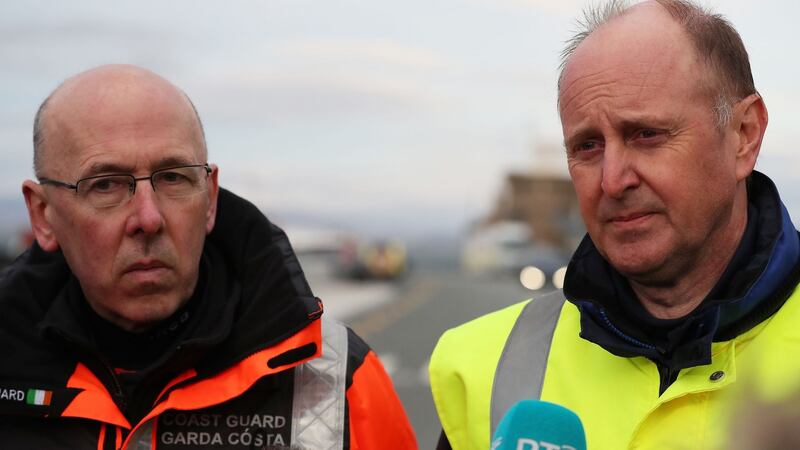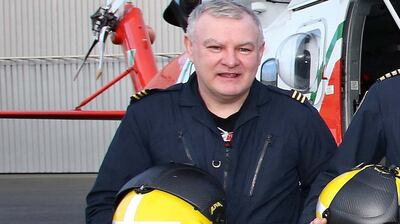Seabed scans for two missing Irish Coast Guard airmen are continuing on Sunday, following Saturday’s extensive surface sweep of the Atlantic from Mayo to Donegal.
The Marine Institute’s remotely operated vehicle (ROV) has been deployed close to Blackrock island, 13km west of Blacksod, where the helicopter crashed almost a month ago.
The ROV is being controlled from Irish Lights ship Granuaile and northwesterly winds favour access to the southern side of the island today.

Over 8,500 square km, or over 3,300 square miles, of sea was scanned by 110 fishing vessels, along with RNLI lifeboats, Irish Coast Guard and Irish Underwater Council rigid inflatable boats throughout Saturday in the continuing effort to locate winch team Paul Ormsby (53) and Ciarán Smith (38).
It is almost four weeks since both went missing after their Irish Coast Guard Dublin-based Rescue 116 helicopter crashed off the island during an approach to Blacksod lighthouse for refuelling.
Irish Coast Guard senior pilot Dara Fitzpatrick (45) and co-pilot Mark Duffy (51) were the first two confirmed casualties. There had been hopes that their two colleagues would be close to a section of wreckage from the Sikorsky S-92 which was lifted from a depth of 40m a week ago on April 2nd.
Orla and Seán Smith, siblings of missing north Dublin winchman Ciarán Smith, set out with the Ballyglass inshore fleet on board the Éire Óg early on Saturday.
“To come here, see so many fishermen involved in this endeavour and hear the boats on the radio and all around us on the radar is very heartening,”Ms Smith said afterwards at the RNLI Ballyglass lifeboat station.
“They feel this as much as we do, you really feel that everyone wants to help and understands our need to find these two men,” she said. “And there can be nobody at sea now who doesn’t know that these two men are missing.”
RNLI Ballyglass lifeboat coxswain John Walsh and his colleagues Paudge Kelleher, Agatha Hurst, John Gaughan and Pat Cosgrove said that visibility was excellent throughout Saturday.
Ballyglass and Achill lifeboats have launched constantly for the past four weeks, and at this stage “every buoy, every potential area” has been checked and rechecked, the Ballyglass crew said.

Participants in Saturday’s search, spearheaded by three fishing industry organisations, travelled from as far south as Kerry and as far south-east as Co Waterford, and as far north as Co Down. Ms Caitlín Uí Aodha, chairwoman of the Lost at Sea Tragedies (LAST) group, also travelled to north Mayo.
Air, sea and shore scans by the Irish Coast Guard, Civil Defence volunteers, an Air Corps Casa maritime patrol aircraft and the Shannon -based Rescue 115 helicopter also took place, according to Irish Coast Guard operations manager Gerard O’Flynn.
A stretch of coastline from Co Donegal to Co Mayo had been divided into a number of search areas, each under the direction of an Irish Coast Guard or RNLI lifeboat asset.
Malin Coast Guard marine rescue co-ordination centre (MRCC) and the Naval Service ship LÉ Ciara assisted with co-ordination.
Mr O’Flynn has appealed to vessels at sea to continue to keep a good look-out for any material which may be associated with Rescue 116, and report any finds to Malin Head Coast Guard MRCC.
The AAIU preliminary report is expected to be published shortly. It has ruled out mechanical anomalies in the aircraft before the crash, following an initial analysis of black box flight data.
Wreckage from the helicopter lifted from the seabed last Sunday has been transported to the AAIU facility in Gormanston, Co Meath.










